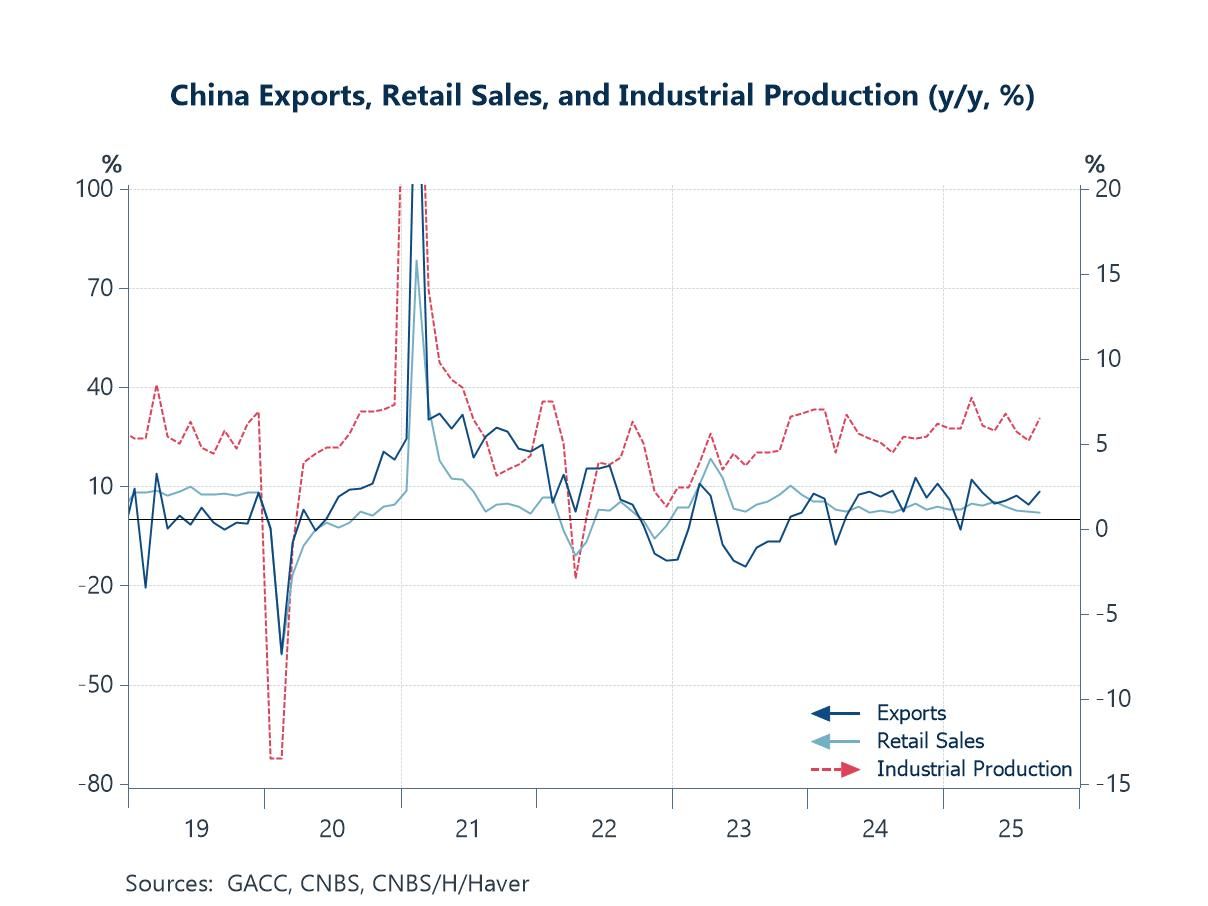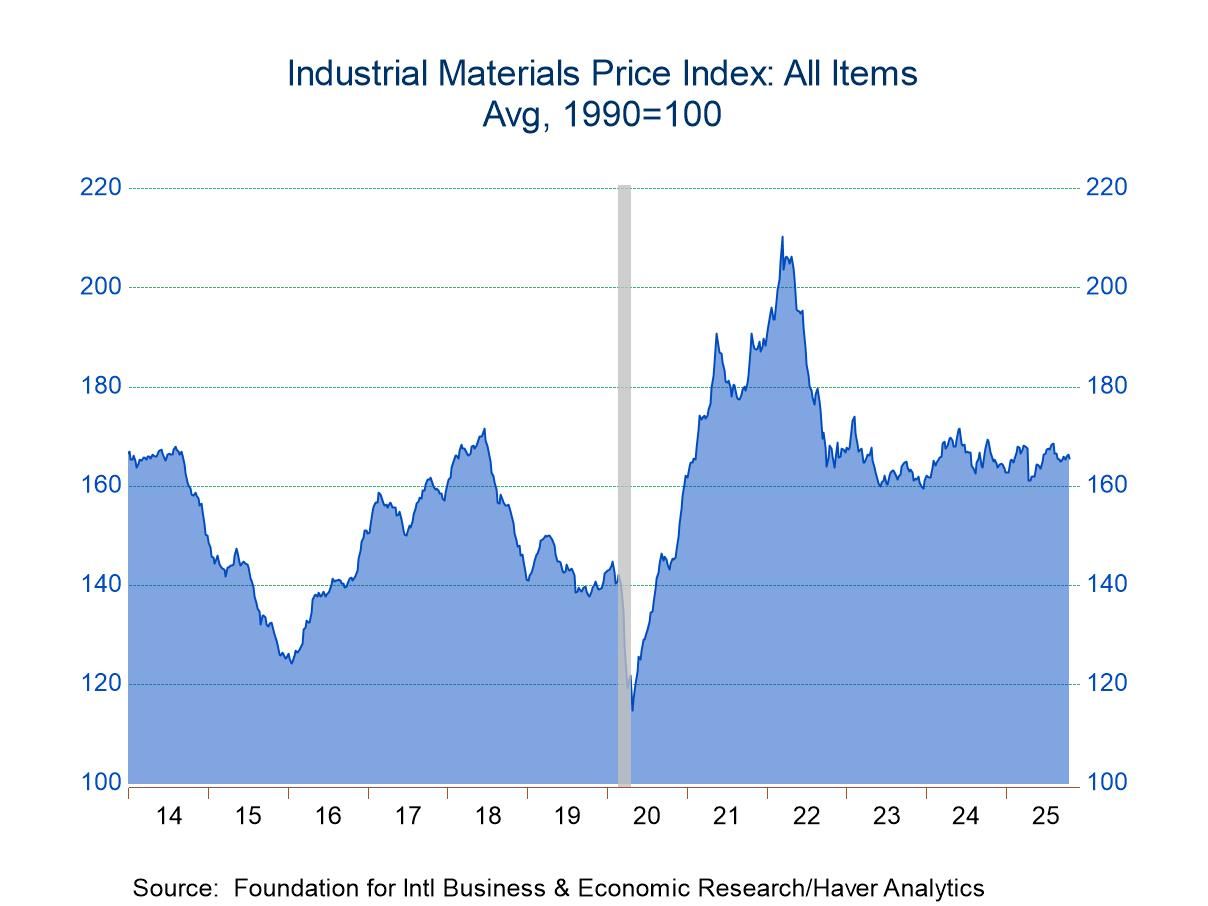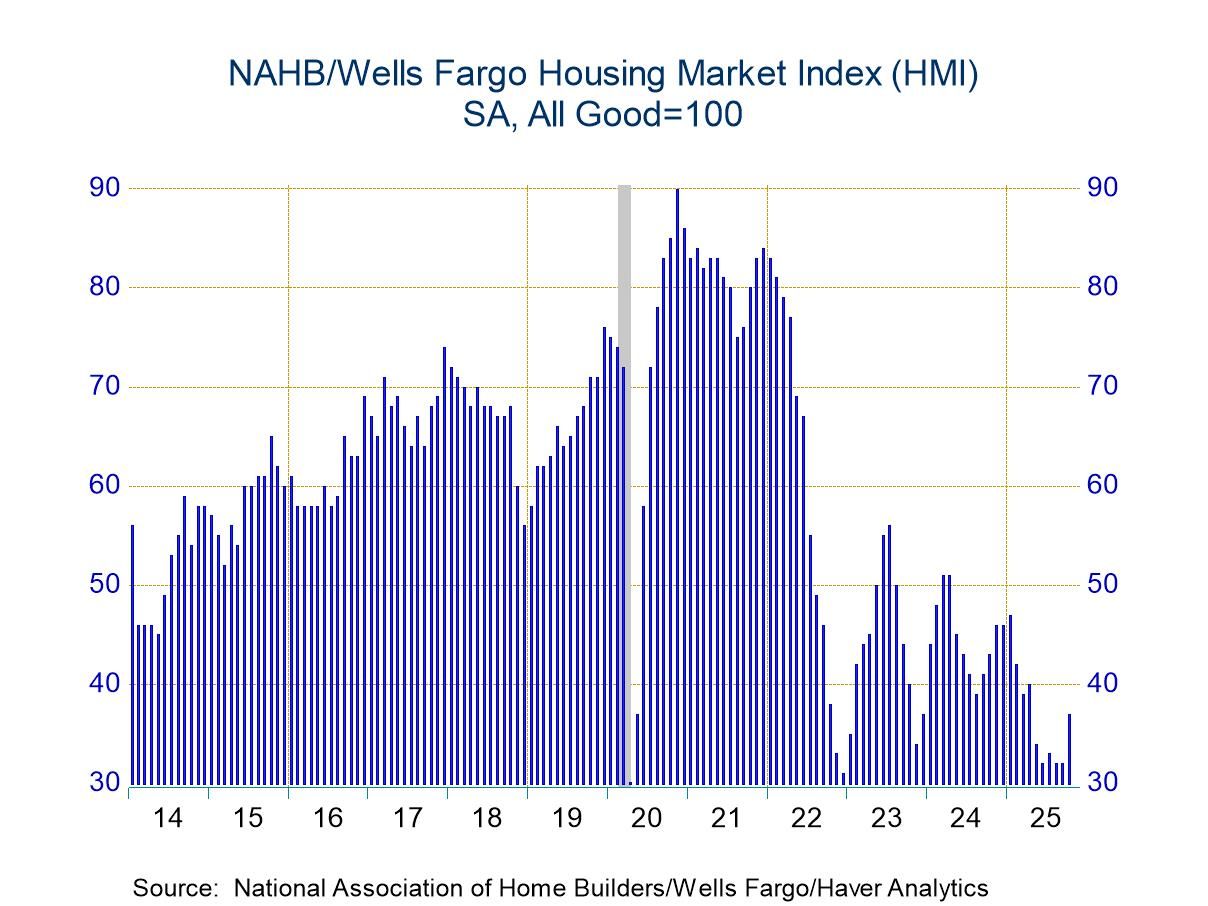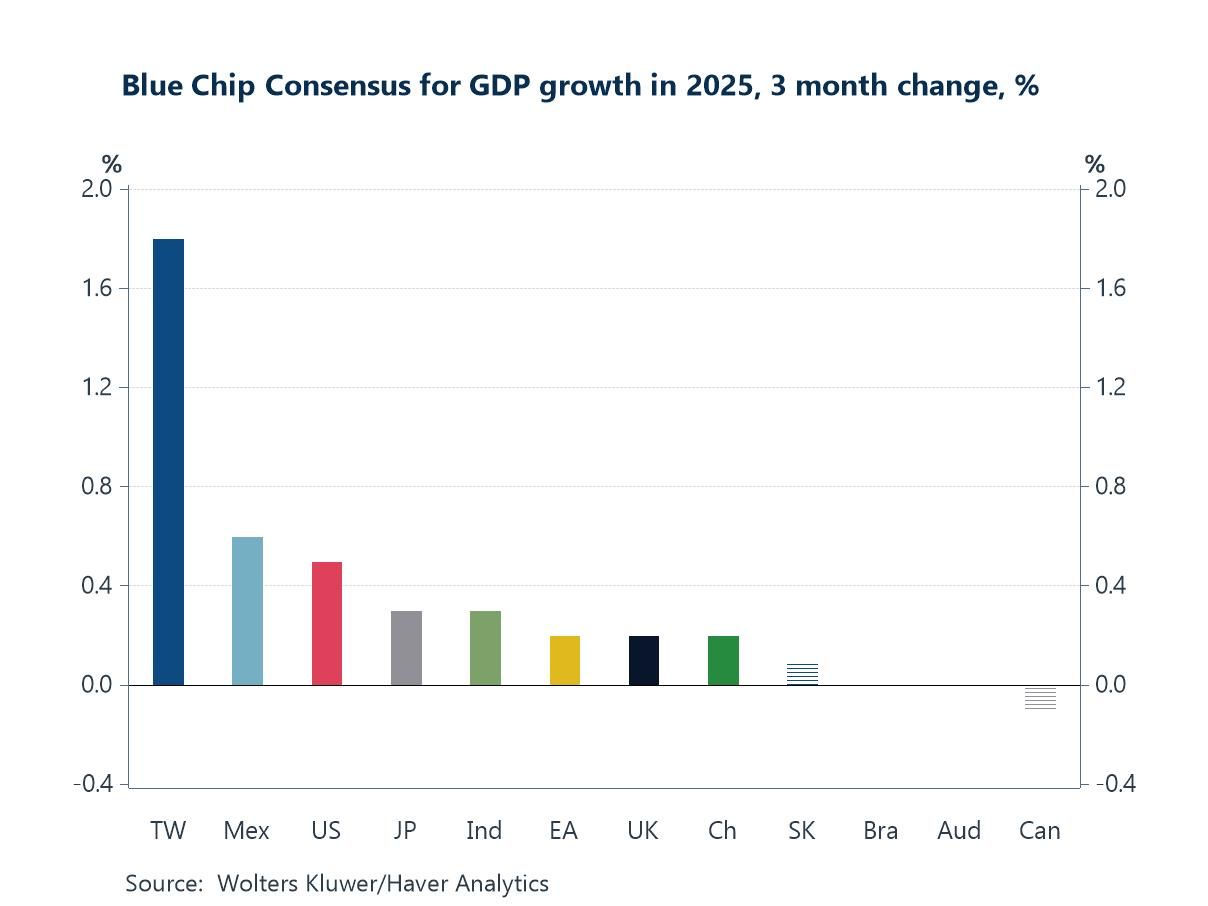 Global| Jul 07 2017
Global| Jul 07 2017German IP Looks Very Strong; Output Growth Ramps Up
Summary
Germany's industrial production is up by 1.2% month-to-month in May after a 0.7% gain in April. The three-month growth rate at 8.5% annualized is a part of a sequential acceleration from 12-month to six-month to three-month. [...]
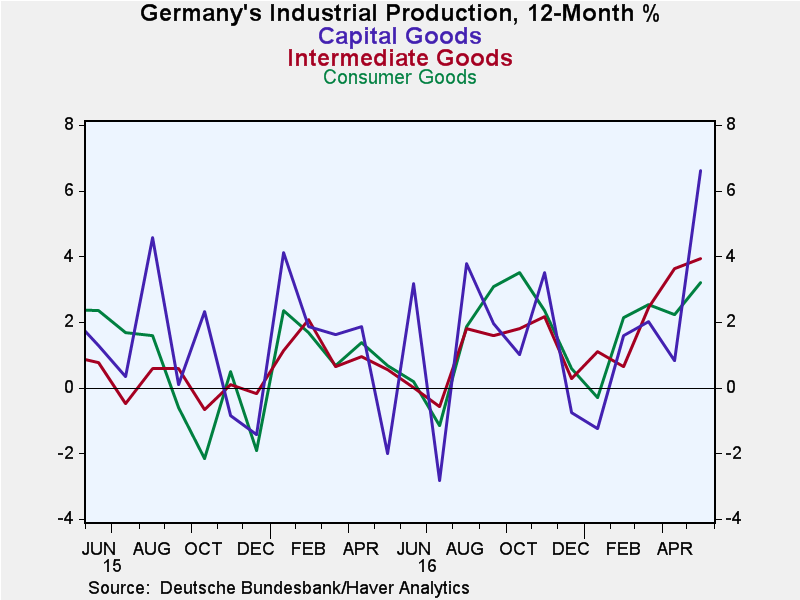 Germany's industrial production is up by 1.2% month-to-month in May after a 0.7% gain in April. The three-month growth rate at 8.5% annualized is a part of a sequential acceleration from 12-month to six-month to three-month. Sequential acceleration is present for German output of consumer goods, capital goods and intermediate goods. Each sector has three-month annualized growth of better than a 6.5% pace. Year-over-year, the weakest sector growth is for consumer goods at a 3.2% gain.
Germany's industrial production is up by 1.2% month-to-month in May after a 0.7% gain in April. The three-month growth rate at 8.5% annualized is a part of a sequential acceleration from 12-month to six-month to three-month. Sequential acceleration is present for German output of consumer goods, capital goods and intermediate goods. Each sector has three-month annualized growth of better than a 6.5% pace. Year-over-year, the weakest sector growth is for consumer goods at a 3.2% gain.
In the quarter-to-date (two months into it), output is up at a 9.6% pace with sector growth rates at 5.9% or better.
Construction output in Germany saw a 0.5% decline in May after a 0.7% drop in April. Construction output is cooling after logging an 11.2% gain over 12 months and a 22.4% pace over six months. The three-month pace is down to a 'modest' 6% annual rate. But in the quarter-to-date, construction output is spurting at a 31.6% annual rate.
On balance, it is hard to find an aspect for German industrial output that is weak. Of course, real orders and real sector sales are much weaker than output. Germany released the orders report yesterday that also showed weak domestic demand with much of the strength in German foreign orders. It is still surprising that German real domestic orders and real sector sales are so weak with foreign orders and German output so strong.
Elsewhere in Europe output stands firm to strong. In May, output rose in in five of the six countries listed in the table (France, Spain, Ireland, Portugal, Sweden and Norway). All six show gains in the three-month growth rates with double digit expansions in France, Spain and Ireland over three months. Over six months, only Irish output is lower and it is falling at a double-digit rate. Over 12 months, five of six countries show output gains. Five of the six countries (Sweden an exception) have three-month growth rates stronger than their 12-month growth rates. Only Portugal shows clear consistent sequential acceleration. In the quarter-to-date, two of six of these countries show declines (Spain and Sweden) with firm to strong gains elsewhere.
On balance, Germany and Europe are showing strong gains in industrial output to dovetail with the recent strength in global PMI data for manufacturing. Germany still has a somewhat softer spot in domestic real orders and in real sector sales. But German and European industrial output and manufacturing PMI reports have been consistently very strong recently.
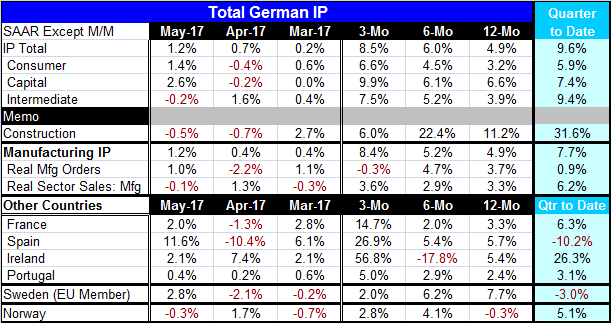
Robert Brusca
AuthorMore in Author Profile »Robert A. Brusca is Chief Economist of Fact and Opinion Economics, a consulting firm he founded in Manhattan. He has been an economist on Wall Street for over 25 years. He has visited central banking and large institutional clients in over 30 countries in his career as an economist. Mr. Brusca was a Divisional Research Chief at the Federal Reserve Bank of NY (Chief of the International Financial markets Division), a Fed Watcher at Irving Trust and Chief Economist at Nikko Securities International. He is widely quoted and appears in various media. Mr. Brusca holds an MA and Ph.D. in economics from Michigan State University and a BA in Economics from the University of Michigan. His research pursues his strong interests in non aligned policy economics as well as international economics. FAO Economics’ research targets investors to assist them in making better investment decisions in stocks, bonds and in a variety of international assets. The company does not manage money and has no conflicts in giving economic advice.



